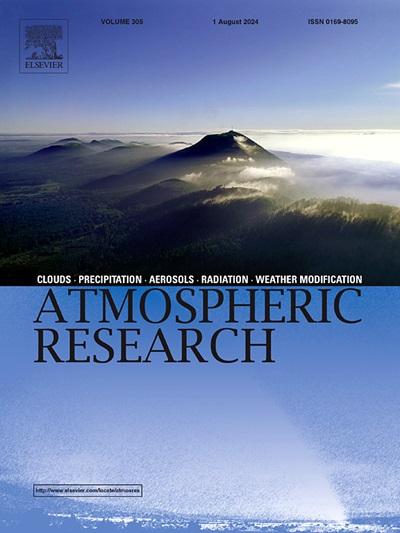Operational satellite cloud products need local adjustment – The Galapagos case of ecoclimatic cloud zonation
IF 4.5
2区 地球科学
Q1 METEOROLOGY & ATMOSPHERIC SCIENCES
引用次数: 0
Abstract
Like many small oceanic islands, the Galapagos archipelago, renowned for its unique geographic location and exceptional endemic biodiversity, faces significant challenges under climate change. In particular, the atmospheric water supply for the ecosystem and the local population is under threat, with clouds and rain playing an important role in ensuring freshwater availability under climate change. Better planning of adaptation measures would require climate data on clouds as a prerequisite for precipitation and rainfall at high spatio-temporal resolution, which are not available in this area. Operational products such as satellite derived cloud and precipitation products or reanalysis data are widely used to compensate for the lack of local data availability but are often poorly suited for regional applications. In the current study, we aim to generate high quality area-wide cloud information to distinguish ecoclimatic cloud zones that may require different adaptation measures to climate change. To address this issue, we have developed a new physical rule-based cloud mask retrieval specifically tailored for the Galapagos Archipelago, based on data from the third generation GOES-16 Advanced Baseline Imager (ABI) geostationary satellite. The new Galapagos Rainfall Retrieval (GRR) cloudmask was tested against independent observational data and compared to both the operational GOES-16 ACM (ABI Clear sky Mask) and the MODIS cloudmask benchmark cloud mask. Our test results confirm that the GRR-cloudmask (Probability of Detection POD = 0.94, Critical Success Index CSI = 0.92–0.93) clearly outperforms the operational ACM-cloudmask (POD = 0.56–0.68, CSI = 0.55–0.67). Area-wide tests against the MODIS cloud mask showed a CSI of 0.72 and a POD of 0.74 for the ACM, which is superior to the GOES-16 ACM-cloudmask. We produced cloud frequency maps for all months and day slots and analysed cloud frequency using ancillary meteorological data. In general, the cool season (Jun-Dec) / night shows much higher cloud frequencies than the warm season (Jan-May) / daytime. However, regional cloud patterns differ along a west-to-east and south-to-north gradient, depending on complex interactions of forcing parameters such as exposure to the main circulation, sea surface temperature zones, altitude and land cover. A k-mean cluster analysis resulted in nine ecoclimatic cloud zones over land, which are much more differentiated than the widely used four-zone classification. The results will help to develop more site-specific climate change adaptation planning for the iconic Galapagos National Park.
求助全文
约1分钟内获得全文
求助全文
来源期刊

Atmospheric Research
地学-气象与大气科学
CiteScore
9.40
自引率
10.90%
发文量
460
审稿时长
47 days
期刊介绍:
The journal publishes scientific papers (research papers, review articles, letters and notes) dealing with the part of the atmosphere where meteorological events occur. Attention is given to all processes extending from the earth surface to the tropopause, but special emphasis continues to be devoted to the physics of clouds, mesoscale meteorology and air pollution, i.e. atmospheric aerosols; microphysical processes; cloud dynamics and thermodynamics; numerical simulation, climatology, climate change and weather modification.
 求助内容:
求助内容: 应助结果提醒方式:
应助结果提醒方式:


